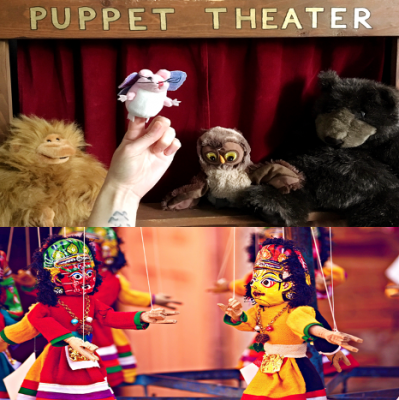
What kind of performer never needs to know what he or she is going to do or say? A puppet. Although a puppet does not need a script, the puppeteer does. The puppeteer is the person who works the puppet.
Many puppets are hand puppets. One kind of hand puppet is called a glove puppet. It has a head attached to a mitten-like upper body. The puppeteer’s hand fits inside the glove. The puppeteer’s thumb and fingers move the puppet’s arms and head.
A marionette has a whole body, including legs. Most marionettes are moved by strings that run from their head, shoulders, hands, and knees up to the control – a small wooden frame. Puppeteers hide backstage and work the marionettes by moving the controls from above.
Puppeteers work rod puppets by moving rods or sticks. A rod puppet can be just a head mounted on a stick. Or it may have a complete body with movable body parts.
In Japan, rod puppets are used in a form of puppet show called bunraku, or doll theatre. A bunraku puppet has joints that move. Its eyes, mouth, and even its eyebrows move, too. In other parts of Asia, rod puppets perform shadow plays. Strong lights from above and behind cast the puppets’ shadows on a cloth screen. The puppets in these shadow plays are often made of leather. In China and Turkey, leather puppets are dyed, and they cast coloured shadows.
Picture Credit : Google
